Doner Kebab: A Gyros By Any Other Name
What is a doner kebab? Popular in many countries around the world, in Europe, Asia, even Canada, they’ve never taken off in the United States to my knowledge (though many large cities may boast a vendor or two). In the US, kebab (more likely to be spelled kabob, as if it were a comic book sound effect), usually means a meat-and-vegetable skewer at a backyard cookout. The word kebab though, in Turkish and in a number of other languages, refers to a variety of roasted meats.
Doner, on the other hand, is a Turkish word that essentially means turning or rotating around ones self. Doner kebab then translates literally as “rotating roasted meat” and the Wikipedia page also references variants including Greek Gyros (Greek for “turn”), Arab Shawarma (a compound Arabic/Turkish word meaning “turning meat”), and Mexican al Pastor (Spanish for “shepherd-style,” referring to the lamb-based origins of the dish), all of which are common enough in the US.
So what differentiates Turkish-style doner kebab from Gyros et al?
Lavash Mediterranean Grill is a restaurant just a block from my office that serves doner kebab cut fresh from the spit. I stopped in one day–they have a choice of beef or chicken doner but the beef wasn’t ready at the moment so I ordered chicken. They are available as a “sandwich” stuffed into pita or wrapped in the restaurant’s namesake lavash flatbread. I chose the latter.
It wasn’t very good. The chicken was OK, essentially shawarma cut fresh from the spit with some decent char. But the salad was straight out of a bag, the lavash wrap had seen better days, and though it came with 2 sauces, both the yogurt-based sauce and the hot sauce were lackluster. Surely Chicago has better doner options than this?
Well of course it does. Back in the days when I used to help lead culinary bicycle tours for my friend Dimitra’s business Fork and the Road (since sold to Graze magazine), one of our stops was Cafe Orchid, an adorable little Turkish restaurant located about a mile west of Wrigley Field in Chicago.
The dining area is essentially a little screened-in porch you can just see to the far left in the photo above, though it’s much more attractive inside than that implies.
Cafe Orchid’s doner kebab is served wrapped in lavash bread, with freshly cut tomatoes, red onions, and romaine lettuce. The meat is spiced ground lamb, cut from a cone, very much like the typical gyros in terms of taste and texture both. In fact, the menu item references gyros.
It comes with fries and both yogurt sauce and hot sauce. The yogurt sauce, Turkish cacik, is quite similar to Greek tzatziki but with more of an emphasis on mint over dill. The hot sauce was a fairly typical vinegar-based chili sauce with a bit of a kick. Overall, the experience is very much like that of eating a gyros (though I don’t know why I never thought about adding hot sauce to them before. Seems like a no-brainer in retrospect.)
Chicago recently got a new German-style street food truck called Doner Men. They had the gumption to name themselves after doner kebabs, so I was looking forward to their take on the sandwich. However, that truck is off the road until January, and instead they’re running a booth at Chicago’s annual Christkindlmarket, a German open air market/festival held during the holidays.
Unfortunately, I’m not going to be able to make it to Christkindlmarket until December. I was going to have to try to make the German style doner kebab myself.
Fortunately, it didn’t take much searching to find people asking how they could recreate them at home, and people who answered.
The Meat
I found recipes for both the meat and the bread in this thread on Chowhound. Making the meat involves essentially ruining some nice ground lamb, mixing in flour along with the spices and pulverizing it in a stand mixer until it’s a rubbery mess. This is, however, what gives the meat its distinctive gyros-like density and sliceability. I differed from that recipe in that I used actual minced garlic, grated onion, and toasted ground mustard seeds in place of the powders. I don’t have a vertical spit–yet–so instead I pressed the 2 lbs of doner kebab meat into loaf pans.
I baked these in the oven for about 45 minutes and as I pulled them out of the oven, my house smelled like a gyros stand.
The Bread
The thread I was reading used a German Fladenbrot recipe, though the Doner Men truck uses something more like the lavash I’d been seeing elsewhere. However, here at the Tribunal we are not fully convinced of the sandwichness of a wrap–is a burrito a sandwich? I’m not fully willing to dismiss the possibility that it is but others are not so generous. I wanted to do something more bread-like, and this recipe fit the bill.
I’m not sure this type of Fladenbrot is actually used for doner kebabs in general, and I’m not sure I got it quite flat enough–I used bread flour instead of all-purpose flour and ended up with something that just didn’t want to stay quite flat enough. It ended up about twice as high as what was described, but the bread was great and it looked beautiful.
The Condiments
I made some Cacik using this Haydari recipe but adding some grated peeled cucumber. Haydari is a variant of Cacik served as a meze that doesn’t have cucumber. I chose that recipe because the ratio of mint to dill looked more like what I’d experienced at Cafe Orchid than any of the normal Cacik recipes I found online.
I also cut up some romaine lettuce, tomatoes, and sweet yellow onions, and got out some Nando’s hot peri-peri sauce.
The Sandwich
To simulate the kind of charring you get from the vertical spit on gyros or doner kebab meat, I cut the loaves into thin slices and put them under the broiler for a couple of minutes
The edges curled up a bit, but in general I was able to get the kind of crisp texture and browning I wanted in my kebab meat.
To assemble, I cut each loaf of Fladenbrot into quarters, then sliced into it and stuffed with sauces, meat and veggies. I of course shared with my family, who are big fans of gyros.
And gyros are what these were, though with a slightly different sauce and a more substantial bread and of course the lettuce. The Ottoman Empire may have spread the fame of the doner kebab throughout Europe and Asia, but if anybody ever asks you why they’re relatively unknown in the US you can tell them it’s because the Greeks got here first. They’re delicious, but I’m not sure it’s worth the effort to find something specifically called doner kebab when I’m rarely more than a mile from a stand that serves gyros.

I like sandwiches.
I like a lot of other things too but sandwiches are pretty great


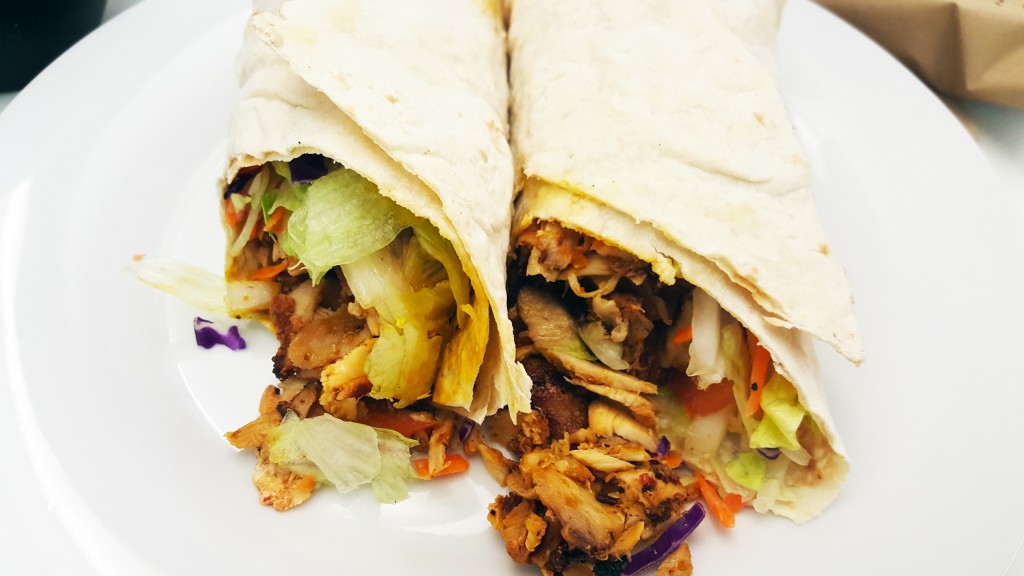
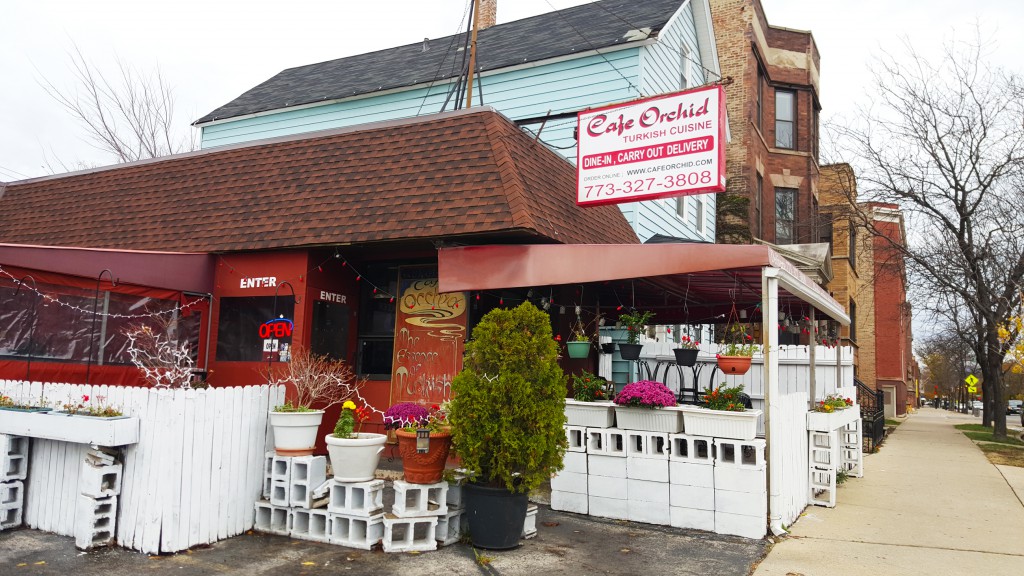
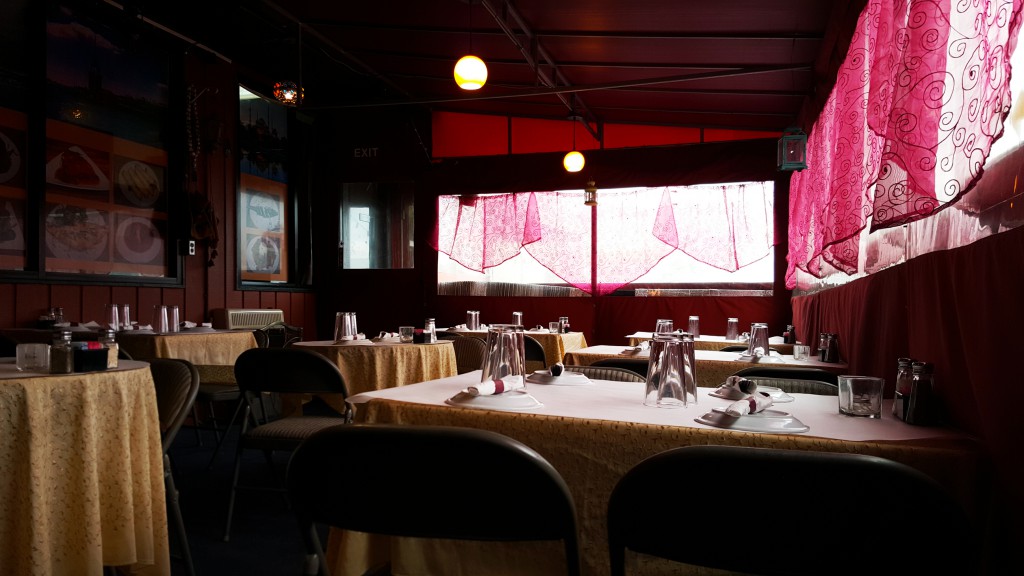
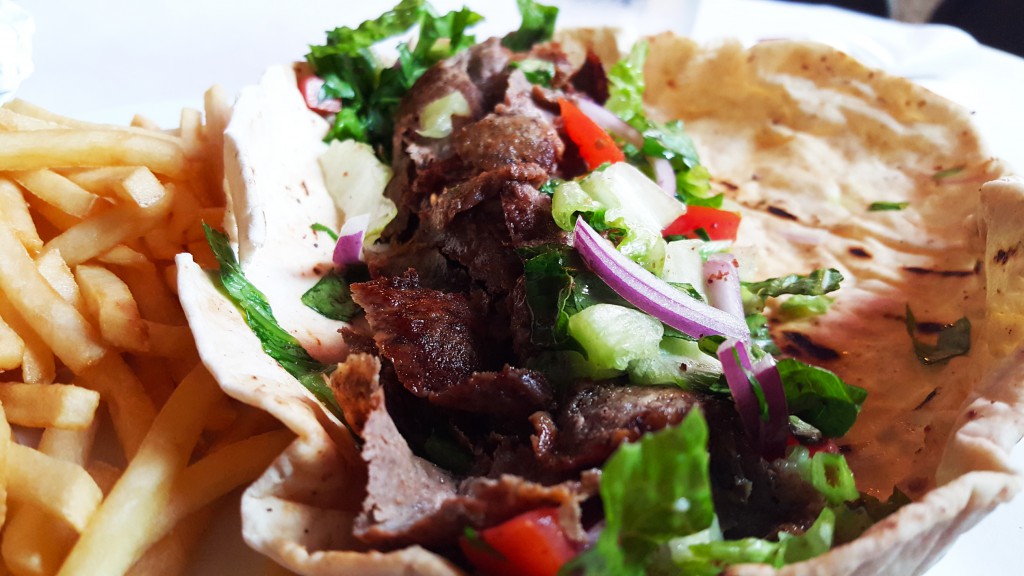
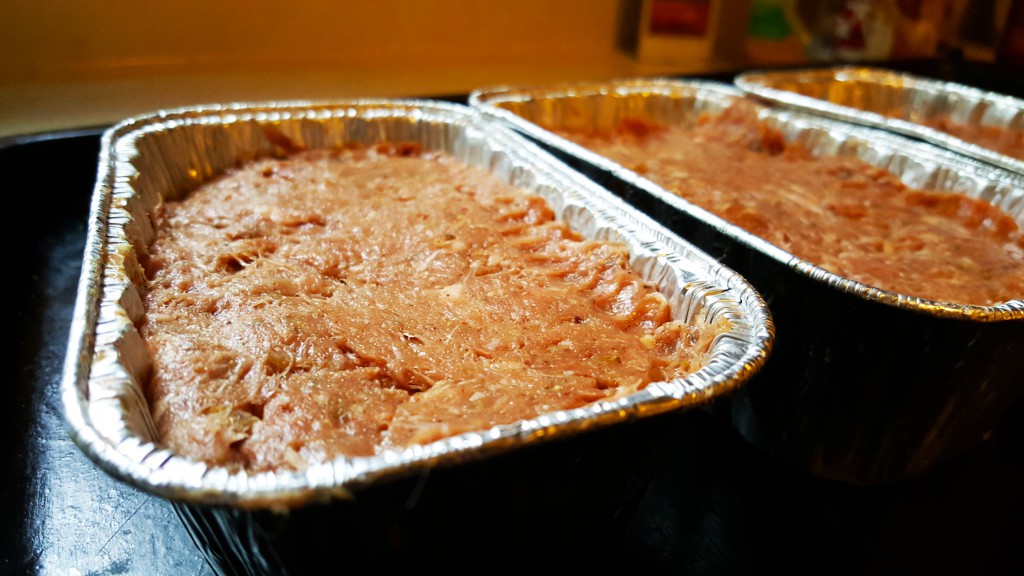
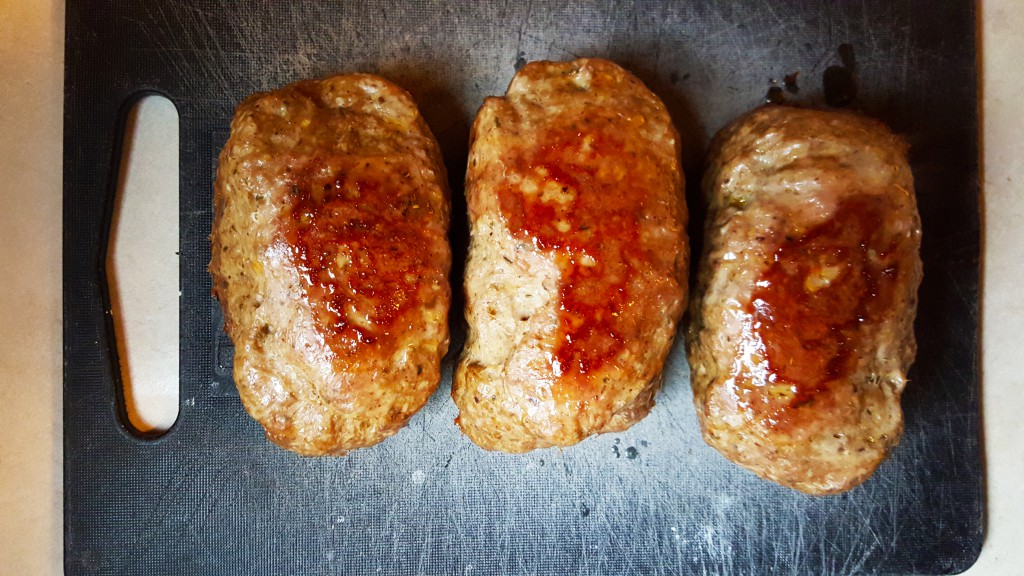
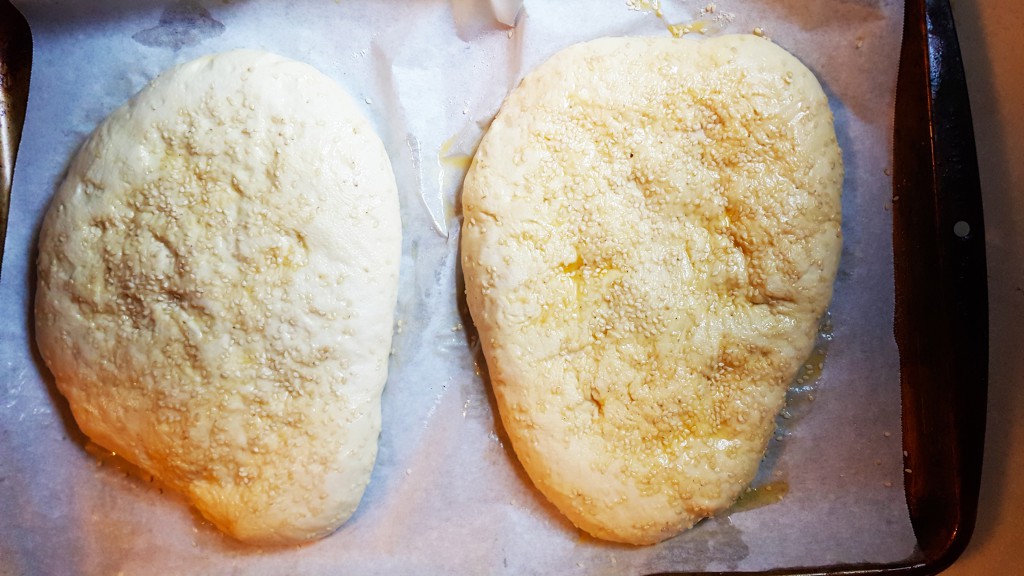
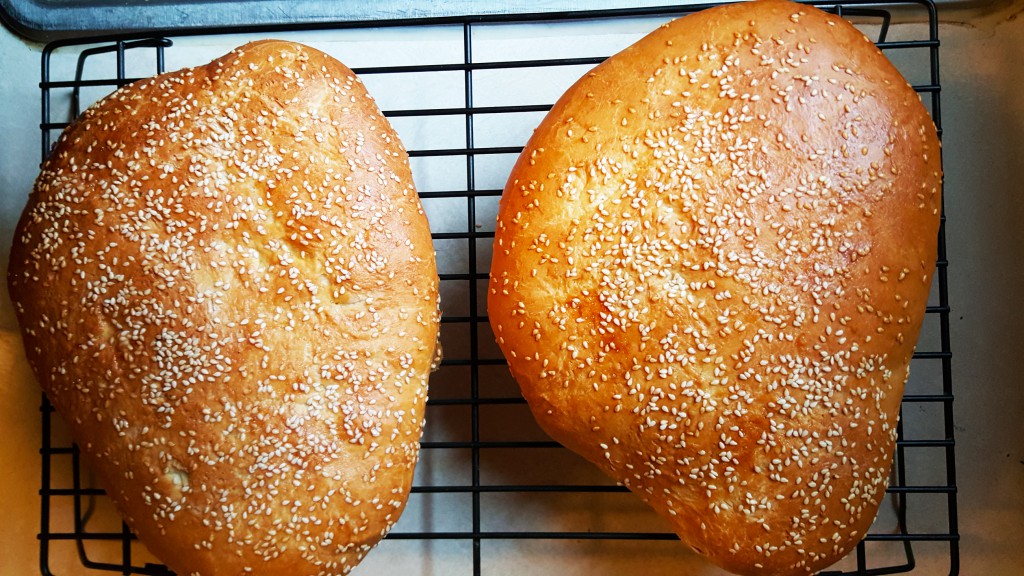
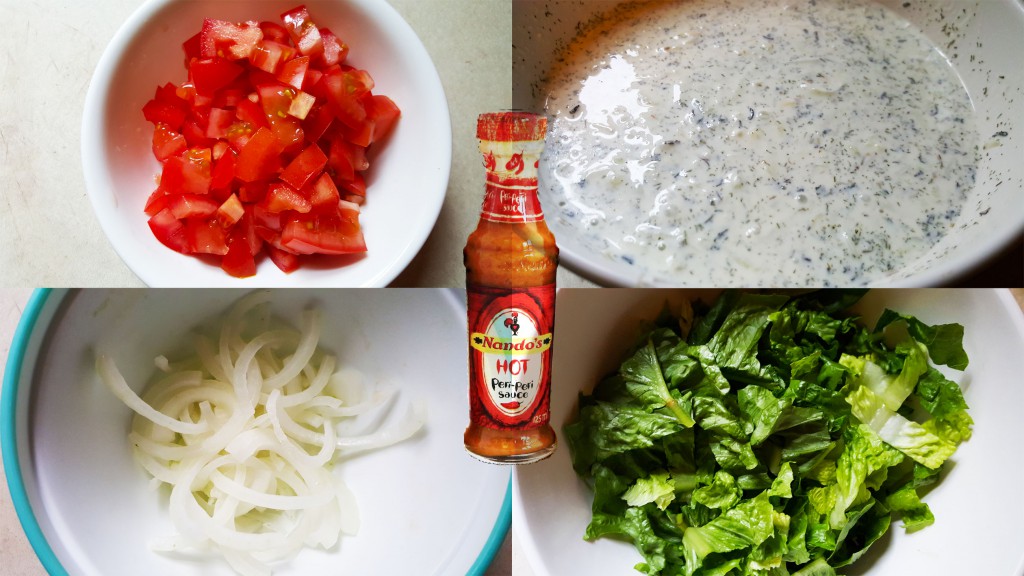
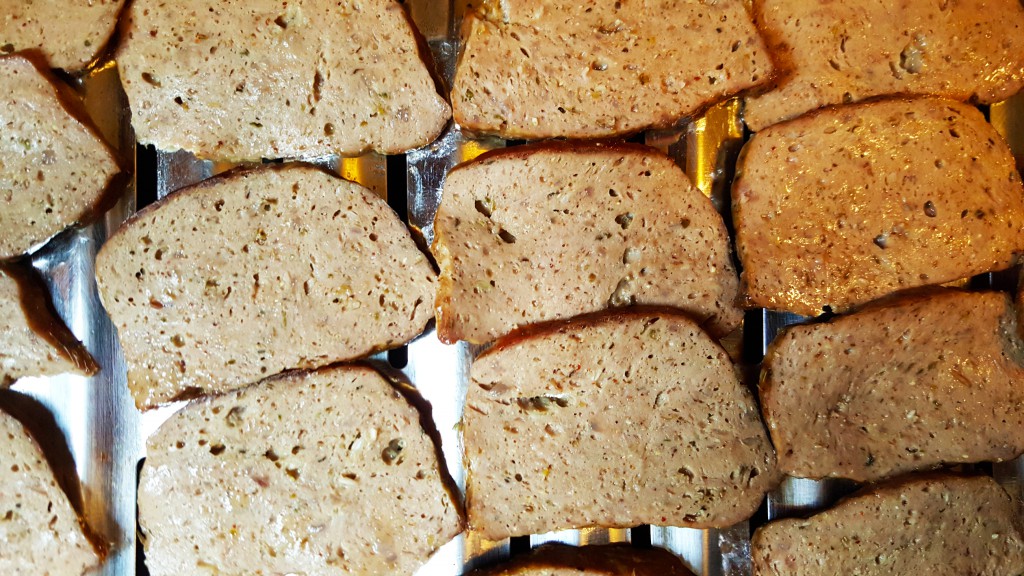
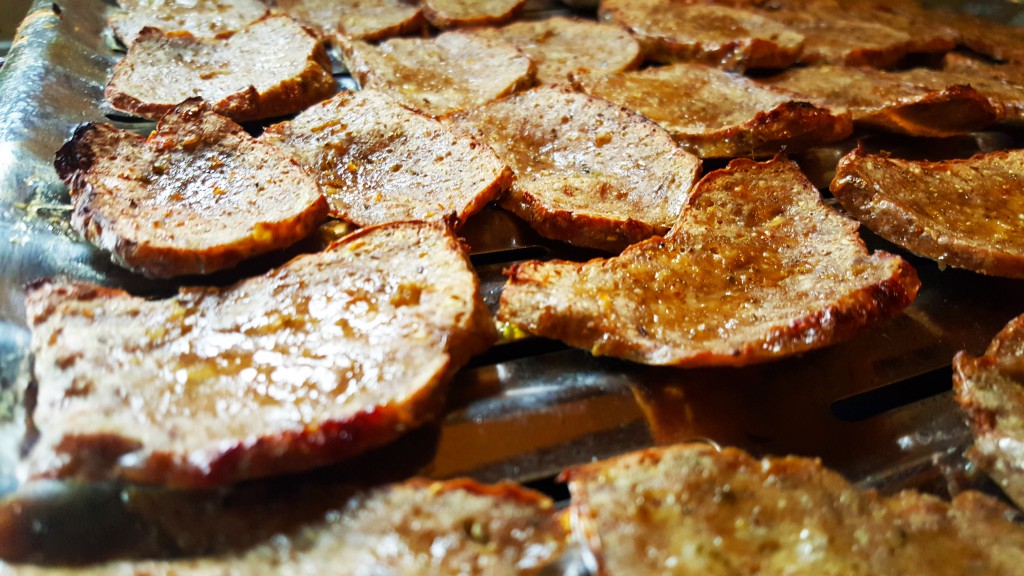
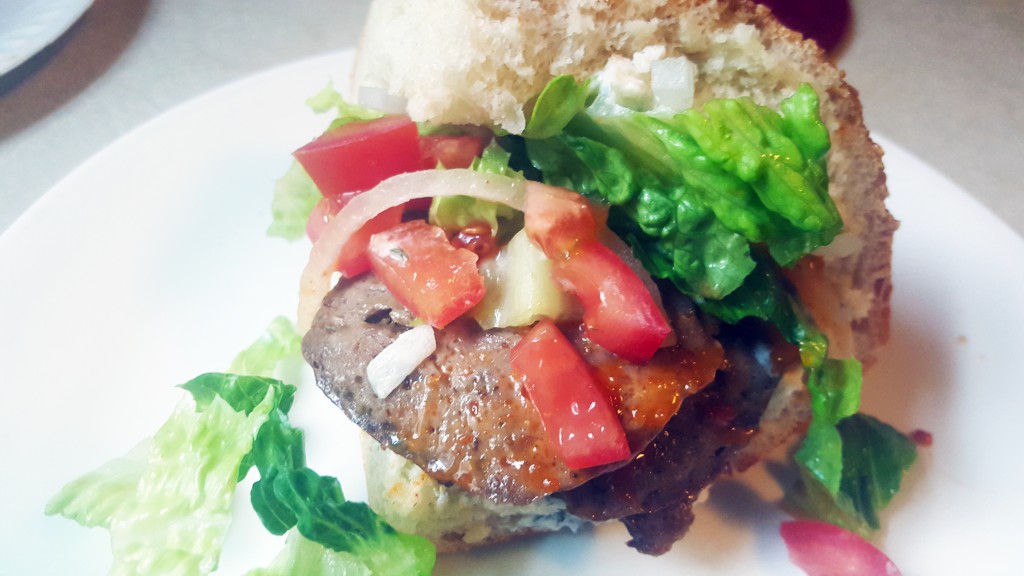









This is fascinating. Kebabs are a standard food court offering here, while gyros is not anymore. The Greeks got here first too, but Lebanese people emigrated here in the 70s and 80s and quickly filled the fast-food niche. The Bloke refers to the meat as the ‘elephant leg’, and sometimes they use slices of meat piled on top of each other and then impaled, rather than the melange you described. That is my preference. The other use for kebabs is as late-night drunk food. There’s one upmarket place close to where I work that makes the best kebabs in town. I might be able to get out and review it. Maybe. I hope.
I was hoping I could post a picture in the comment section. I had just read through this blog entry last night and this morning while walking home here in DaNang from the outdoor market near the ocean carrying a bag of tangerines, some dragon fruit, and 2 more fruits I don’t know the names of, we passed tons of sidewalk stands selling all kinds of noodle dishes and bahn mi for breakfast. But, within 4 blocks of our house,, a sign painted on a run-of-the-mill stand jumped out at me: DONER KEBAB.! I couldn’t believe it! Sure enough, for 12,000VND ($.75) he put a quarter of a freshly baked big flat bread into a grill with a lid to heat both sides, carved a pile of freshly roasted pieces from a vertical rotating spit with a bunch of meat chunks pushed down on it, split open the bread releasing a fresh delicious aroma and put thinly sliced purple onions and I think purple cabbage, 3 kinds of sauces, the meat and a pile of what people call herbs in it. It was extra delicious because I had just read your write-up so I was not only eating something good, I also had rich thoughts to think about kebabs. The “herbs” vary from stand to stand. I think they always include some kind of lettuce torn into small pieces, mint and green onion. After that I’ve heard that it depends on which small village they bought them from. There always seem to be new things among the herbs I have never seen before. Some are mild tasting – some have strong and unusual tastes. We dump a piled-high plate full into our noodles almost three meals a day, add some chili and a squeeze of lime.
Hi Linda!
It’s wonderful to think of you reading my blog while you’re over there with Tim, Janet, and the kids in Vietnam, and how cool that they have Doner Kebabs there as well! I’d love to see whatever picture you’d like to have attached to your comment–maybe I can edit it in. Will you email it to me?
Yes, on Friday. We are leaving in 10 min for Hoi An, an ancient nearby city to stay at a farm B’nB for tourists and explore the countryside but I won’t take my computer. See you later!
Some photos from my mother-in-law Linda’s visit to a Vietnamese Doner Kebab stand:
Here’s the stand, with my father-in-law Mike about to order a kebab
Here’s the kebab meat on the spit
Here’s the bread they used, which is similar enough to my sesame flatbread that I feel better about it.
And here’s the vendor putting either ketchup or hot sauce on the kebab. Please let it be hot sauce
Doner Men is solid. Really great German street-style Döner Kebab and fries with Currywurst.
They also have a restaurant DMen Tap at California and Belmont.
can anybody advise of an alternative word for kebab , I’m trying to launch a German style doner kebab store in the uk , my application on the street food halls keep rejecting me , as they claim there’s too many kebab /similar products already .
Maybe you could add currywurst or an Austrian-style Bosna to the menu and focus on that in the application? In Australia, they call doner kebab meat served in plate form with fries and other ingredients a “halal snack pack” or HSP. Otherwise there’s Donair a la eastern Canada, Gyros a la the US, etc.
What Jim says about the HSP is true. It has its own Wikipedia page.
Takeaways often uses the word “shawarma” here rather than doner, but I don’t know which linguistic/ethnic group is which..,